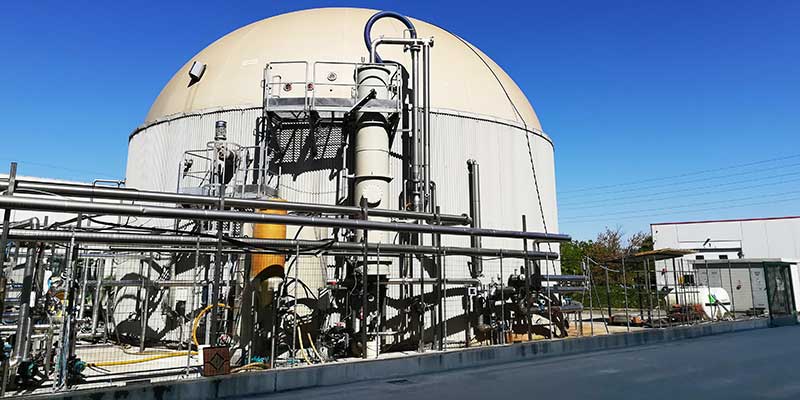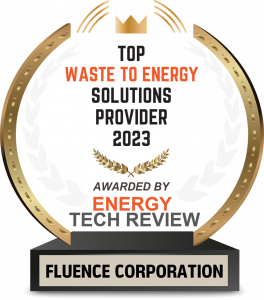
Anaerobic digestion, a waste treatment that breaks down organic matter outside the presence of air, can be used with a variety of feedstocks, including sewage and food waste.
The total energy produced can vary widely depending on factors including what is being treated
Anaerobic digestion is a waste treatment process that breaks down organic matter with bacteria that thrive in the absence of oxygen. Feedstocks can include manure, sewage biosolids, and food wastes. Among anaerobic digestion’s advantages is its ability to treat high-load streams while producing valuable products, including energy. Anaerobic digestion can produce significantly more energy than required to operate the process. But how much more?
The most successful form of anaerobic digestion energy recovery is biogas production. Biogas is 50-75% methane, the main component of natural gas. Although biogas also contains carbon dioxide, it’s considered carbon-neutral because the carbon comes from plant matter and biomethane displaces fossil fuel use. Biogas also contains hydrogen sulfide, water vapor, and traces of other gases.
Purifying the methane in biogas produces another type of natural gas, also known as biomethane, which can be used interchangeably with natural gas and even introduced into the natural gas distribution system.
Treatment for High-Load Streams
Even without energy recovery, anaerobic digestion stands on its own as a robust wastewater treatment process for hard-to-treat wastewater streams with high nutrient loads. Combined with energy recovery, the advantages multiply.
For instance, the Eurofish tuna-processing plant in Ecuador produces a high-nutrient-load wastewater stream. When Fluence added anaerobic digestion energy recovery to the plant’s treatment train, the biogas it produced was used to fuel a boiler for a 35-40% energy savings. It also slashed the volume of sludge waste by 75%.
Varied Energy Yields
Feedstock characteristics are key to anaerobic digestion energy recovery. Characteristics that strongly affect energy yields include:
- Water content
- Total solids
- Volatile solids
- Particle size
- Biodegradability
- Chemical oxygen demand (COD)
Temperatures, hydraulic retention time, mixing time, loading rate, pH, and pretreatment also are important considerations. Smaller digesters, for instance, generally result in shorter retention times, which in turn negatively affect biogas yields.
Maximizing Energy Production
Although most organic material can be digested anaerobically, high digestibility is key to success, and yields from harder-to-digest feedstocks can be increased by combining them with other feedstocks, a process called co-digestion.
Where there is not enough waste available on-site to make energy recovery attractive, anaerobic digestion operations can partner with other nearby waste sources to conduct co-digestion and increase digester size and retention times, thereby increasing yields. The amount of potential yield from a feedstock generally rises with higher content of dry matter, including food waste, which is an ideal substrate for co-digestion.
An advance has, however, leveled the playing field for smaller operations without enough feedstock to pass the break-even point with traditional anaerobic digestion energy recovery. With the external forced circulation (EFC) reactor — a technology developed exclusively by Fluence — smaller operations can benefit from biogas production without having to pool feedstocks for co-digestion.
The EFC reactor evolved from the up-flow anaerobic sludge blanket (UASB) reactor, a high-rate system that already had lower hydraulic retention times than other anaerobic digestion approaches. EFC technology levels up the UASB process by adding an external pumping system to recirculate the granular sludge biomass across a larger bed, increasing the wastewater’s contact with the sludge that does the work.
The result is efficient biogas production with short retention times of six to 48 hours, even with the most challenging streams. High-rate EFC reactors can now provide an economical solution for smaller sites that wish to benefit from sustainable biogas production.
On-site energy savings or profits from biogas sales make anaerobic digestion an attractive option, and Fluence digesters are recovering energy around the world in diverse industries. Contact our experts to identify the energy recovery opportunities in your wastewater stream.

